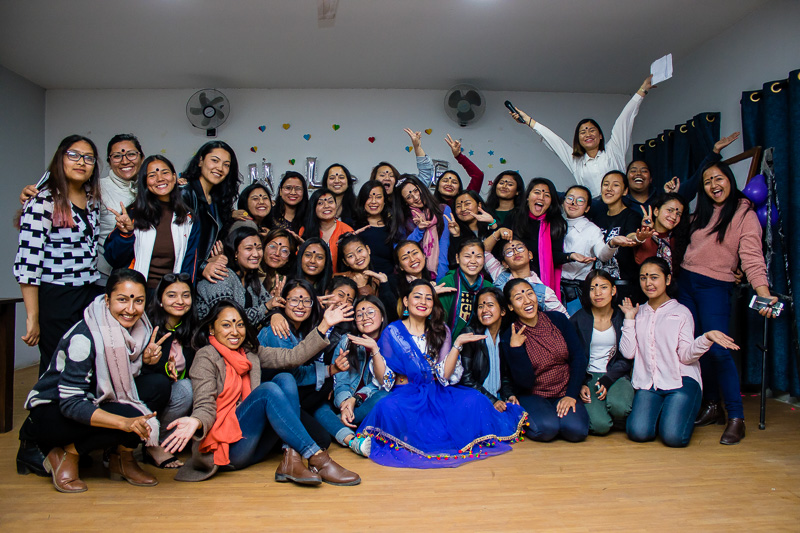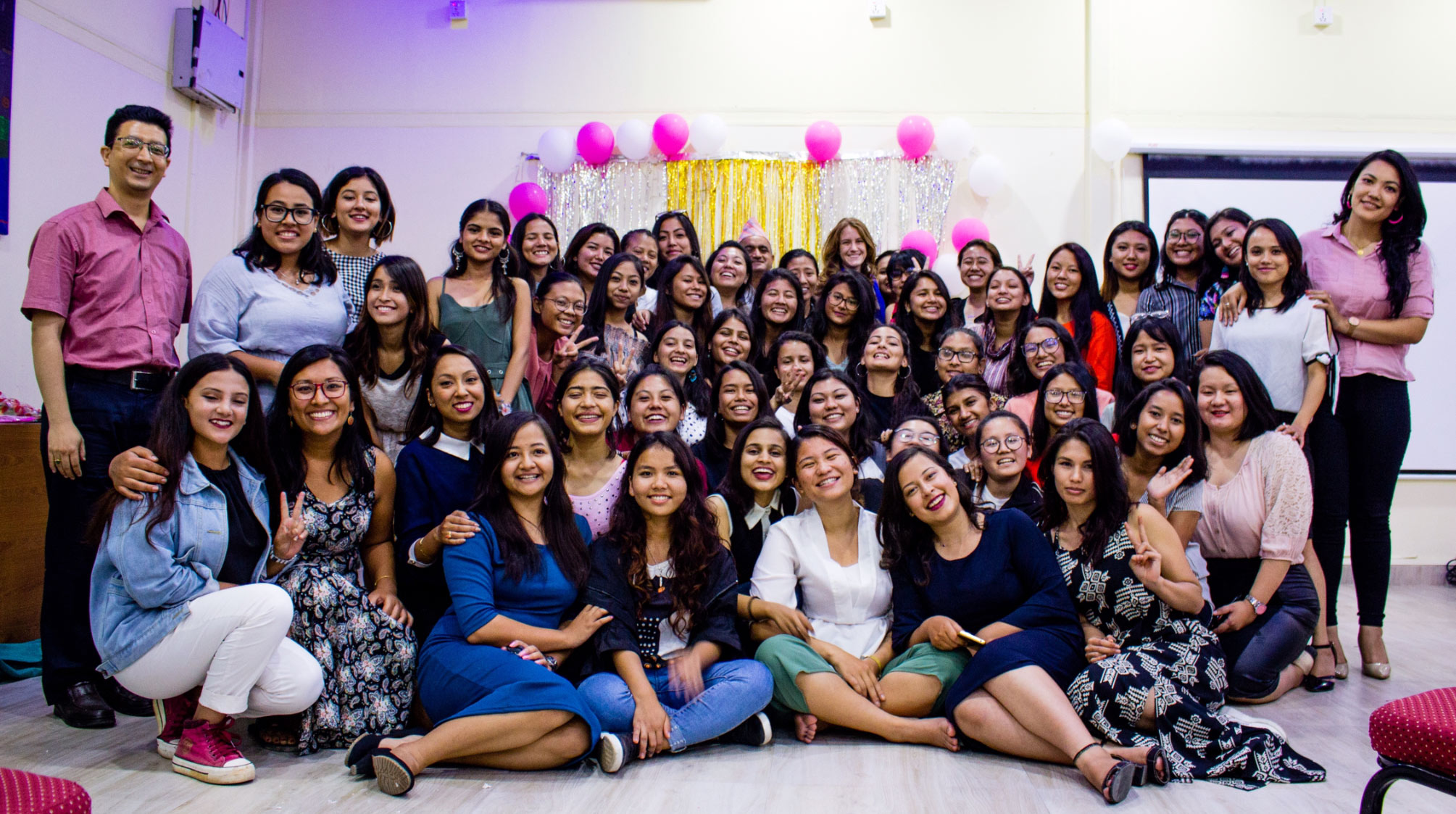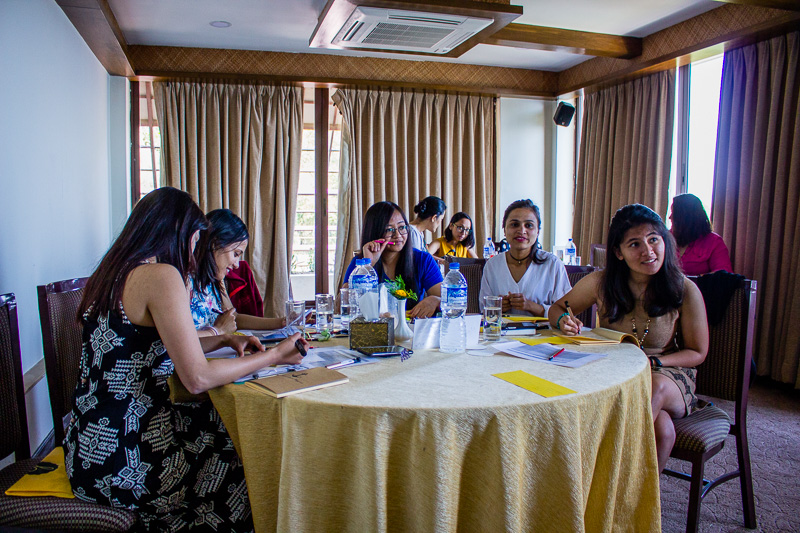Emerging Out Stronger Through Leadership Transition
Categorized as: Asia, Education, Girls & women, Grantee, Leadership, Our Partners, Stories, Storytelling on May 4, 2019. Related Grantee: Women LEAD.

Alumni and LEADers welcome Hima, the new ED.
 By Bidhyalaxmi Maharjan, Vice Secretary of Women LEAD Nepal
By Bidhyalaxmi Maharjan, Vice Secretary of Women LEAD Nepal
Editor’s Note: Skees Family Foundation began working with Women LEAD Nepal in 2016. We love the work they are doing. Since they began, they have trained hundreds of women and impacted thousands of youth. Read on to learn more about what they are doing now and how they plan to grow in the future.
Change is a key part of the growth in our life. We move from becoming a child to an adult and in between these stages of our lives, we see transitions play out in our rocky teenage years. The life of an organization, like Women LEAD, is no different from an individual’s life. Women LEAD is an organization dedicated toward empowering young women to become leaders in their schools, communities, and the country.
Women LEAD started in 2010 as a short-term leadership course for young women. Our three founders, Claire Naylor, Claire Charamnac and Sonu Shakya Bajracharya, went on to develop more extensive training and institutionalize them into an organization that has had an enduring impact on more than 2,337 girls from 2011 to 2018. The person driving this growth was the founder-executive director, Claire Naylor, who made a huge investment in shaping Women LEAD into a strong community of women leaders.
 Alumni and staff bid farewell to Claire, Women LEAD’s founding executive director.
Alumni and staff bid farewell to Claire, Women LEAD’s founding executive director.
Having been at the helm of the organization for almost eight years, you can hardly gauge the intense commotion that news of Claire Naylor’s leaving the organization created in the community. A major part of our stakeholders and the alumni, a group of over 280 young women aged 18-26 who have gone through at least one of Women LEAD’s programs, were happy about what lies ahead in Claire’s life, but they were concerned about what this change would mean for the organization. Similar concerns and uncertainty were also present among the staff. Amidst fears and doubts about the future of the organization with different stakeholders, one thing was certain: this transition was both a risk and an opportunity for us. It offered us an opportunity to build on the legacy created by our founders and continue to grow as an organization. On the other hand, we also risked losing what we had achieved so far and a potential stagnation in the growth of the organization. Worse case scenario, we would go downhill. The management of transition was probably one of the most challenging and fulfilling journeys our two parallel boards in the US and Nepal have been through.
In February, we welcomed a new ED, who is a fierce feminist and passionate about women in leadership. Finding a perfect ED was only possible because of the efforts of a joint search and transition committee of two boards. The committee held comprehensive dialogues with the staff, the alumni, and other key stakeholders about what they would like to see in the future leadership. The committee ensured that every decision they made reflected the voices of these people. Moreover, knowing what skill sets and values we want in the ED is not enough to find the right person. We have learned that not rushing through any decision is quite important. Taking time to reach out to potential candidates, extending deadlines, and being accommodating to promising candidates does not necessarily mean we go off the track. Patience plays a huge role in making the right decisions.
Whether it is a big decision, such as hiring an ED, or other simpler issues, having an alumni-led board in Nepal played a key part in ensuring that the transition process was inclusive and transparent. Our current board includes alumni spanning across many years, including 2011. The alumni-led board not only meant that we were committed to the vision and mission of the organization, and but also it helped us to safeguard our institutional knowledge about the organization and its history.
Another key factor that helped us pull off this transition is our staff, who are passionate about WLEAD’s vision and committed to serving young women in Nepal. One can only imagine the stress, both at the operational and personal level, our staff must have dealt with during this transition. We adopted an open door policy on day one of transition to make sure they felt comfortable sharing their opinions with us. We did multiple rounds of dialogue to talk about their fears and hopes, and allowed them to share their take on our decisions and ask questions. These dialogues were crucial to build trust between the staff and the board and ensure all of us felt confident throughout the transition process. Our transition could not have been successful if our staff had not stepped up to the plate and took ownership of their work.
 Staff and board members of Women LEAD Nepal participate in a strategic meeting.
Staff and board members of Women LEAD Nepal participate in a strategic meeting.
Despite thorough planning of every step of the transition, not everything went right. Although we originally planned to hire an interim ED, we could not do so due to a disagreement between the two boards. Not hiring an interim ED meant that our Director of Operations had to overtake parts of the interim ED’s role and could put additional pressure on staff. In order to deal with this scenario, we revisited our transition plan and conducted a small-scale risk assessment to mitigate the potential risks of not having an interim ED. The disagreement among the boards served as an opportunity to strengthen communication between us.
As a relatively young organization going through its first leadership change, this transition was one of the most challenging and adventurous times for the organization. The decisions we made during this period could either propel the organization to greater heights or cause it to go downhill. In these testing times, what held the organization together was the trust between the boards, the staff, alumni community, and other stakeholders. Our strong commitment to the vision of the organization, practice of open communication, and our staff, who were ready to go the extra mile, is what made the process successful. At last but not least, the support and trust our donors had in WLEAD were what enabled us to emerge stronger.
Photos courtesy of Women LEAD Nepal.
LEARN more about Women LEAD Nepal and their mission to create thoughtful, effective leaders here.
SHARE this story with your networks; see menus at top of page and below this list.
DONATE directly to help young women become leaders and changemakers, here.
SUBSCRIBE! Like what you see? Click here to subscribe to Seeds of Hope!
